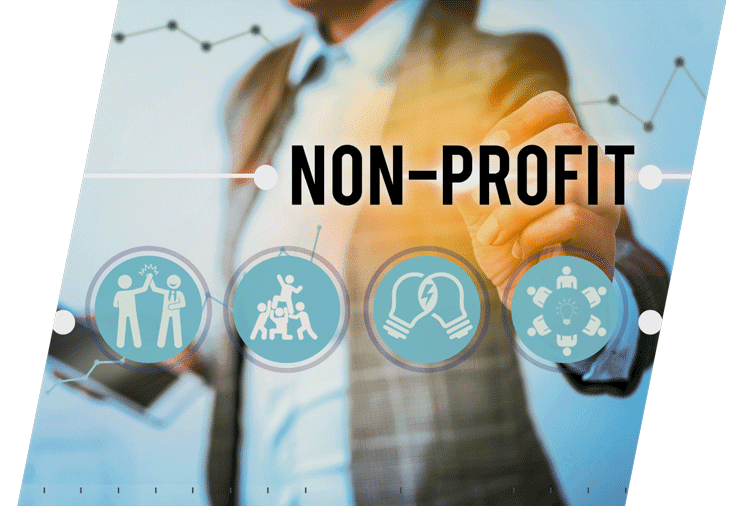Resource Constraints
Resource Constraints
Nonprofit organizations often drive a noble purpose: addressing critical societal issues, supporting communities, and promoting positive change. However, one of their most significant challenges involves operating with limited budgets. Here are some reasons why voluntary organizations have limited budgets to work with.
Dependence on Donations and Grants: Most nonprofits' primary income sources are donations, grants, and fundraising efforts. While these sources are critical to their operation, they can be unreliable and subject to economic fluctuations. Donor contributions may vary from year to year, and grants are often project-specific and time-limited. This dependence on external funding makes it challenging for nonprofits to forecast and plan for stable financial growth.
Allocation of Funds: Social enterprises are committed to allocating a significant portion of their budget directly to their mission. Thus, this can result in limited resources for administrative and operational costs, including marketing and outreach efforts. As a result, the budgets that sustain nonprofit organizations can, paradoxically, constrain their ability to promote their cause effectively.
Competition for Funding: Nonprofits operate in a crowded space, with many organizations vying for the same pool of donors and grants. This fierce competition can pressure organizations to stand out and prove their effectiveness. The limited availability of funds in the nonprofit sector means that only the most efficient and well-marketed organizations can thrive.
Volatile Economic Conditions: Economic downturns can impact nonprofits, severely affecting their budgets during financial crises. When times are tough, donors and grantors may reduce their giving, further worsening budget limitations for these organizations.
How to Maximize Impact with Limited Resources

Mission-Centric Marketing
Mission-Centric Marketing
The nonprofit's mission is its guiding star, representing the change it seeks to bring about. Marketing efforts for brand awareness should reflect and amplify this mission. Nonprofits must ensure that every aspect of their marketing, from messaging to campaigns, is consistent with their core values and objectives. This alignment fosters authenticity, trust, and resonance between the brand and the target audience, who can see that every action of the nonprofit furthers its cause.
Optimizing Marketing for Return on Investment
Optimizing Marketing for Return on Investment
Donor Retention Over Acquisition

The Role of Data in Nonprofit Marketing
Google Analytics: This free tool offers valuable insights into website traffic, user behavior, and the effectiveness of online campaigns. However, since Google's transition to GA4, extracting those insights will require someone with training in report building on that platform.
Customer Relationship Management (CRM) Systems: CRM systems like Salesforce and HubSpot help nonprofits manage donor relationships, track interactions, and segment their audience for personalized outreach. By reporting donations like revenue in your CRM, you can gather vital data on the lifetime value of a donor and expected timelines of donations.
Marketing Automation Platforms: While Google Analytics provides general details up to conversion, your marketing automation platform tied to your CRM can show you nearly every interaction to build a multitouch attribution model.
Call tracking platforms: Even with Google Analytics, a marketing automation platform, and a CRM, companies don't always implement call tracking. However, you're not seeing the whole picture without the ability to track your customer's interaction from phone calls as a conversion and donation source. Even if the call didn't result in a donation, your marketing team needs to understand your customer's journey fully. Call tracking can add the vital middle of the funnel, bottom of the funnel, and even "post" funnel campaign sources into the customer journey details.
Email Marketing Analytics: Platforms like MailChimp or Constant Contact provide data on email open rates, click-through rates, and engagement metrics to measure the impact of email campaigns.
Social Media Insights: Each central social media platform offers analytics tools to track the performance of posts, the growth of the audience, and user interactions.
Online Survey Tools: Tools like SurveyMonkey enable nonprofits to gather valuable feedback and data directly from supporters, helping them fine-tune strategies.
A/B Testing: This practice involves testing two different versions of a campaign to determine which one performs better, and it is an effective way to optimize marketing materials.
Data Analysis Skills: Nonprofits can invest in staff training or hire professionals with data analysis skills to interpret data effectively and turn insights into action.
Data-driven decision-making is the cornerstone of effective nonprofit marketing. Optimization relies on data and analytics to ensure marketing efforts are well-informed, targeted, and efficient. Mission-driven organizations that invest in data collection, analysis, and interpretation can refine their strategies, measure their impact, and achieve their missions more effectively. It's not just about collecting data; it's about making data work for the nonprofit's goals and the causes they champion.
The Digital Shift
Building Community and Advocacy




